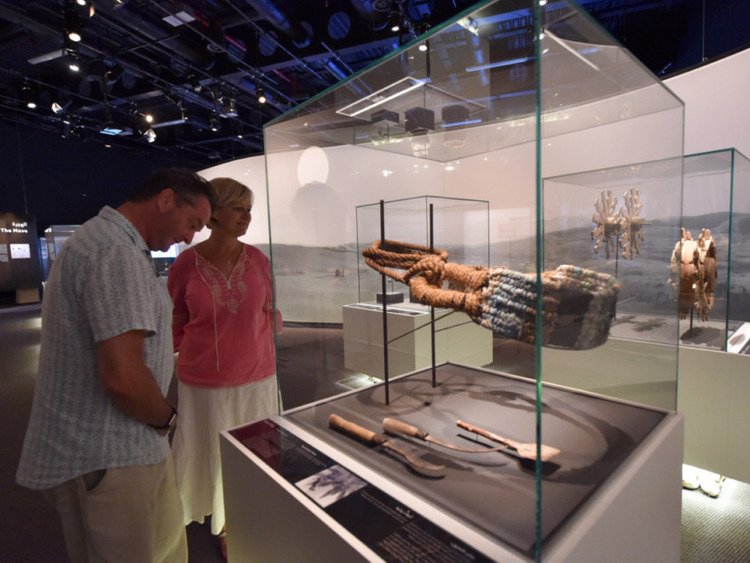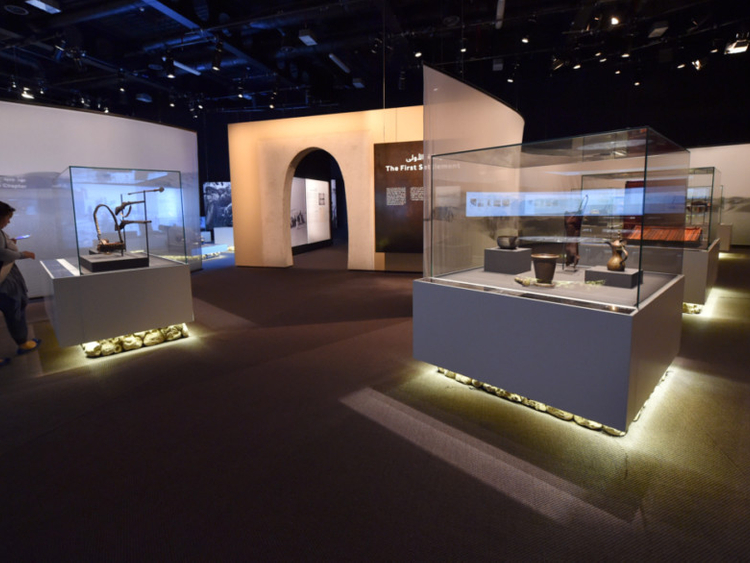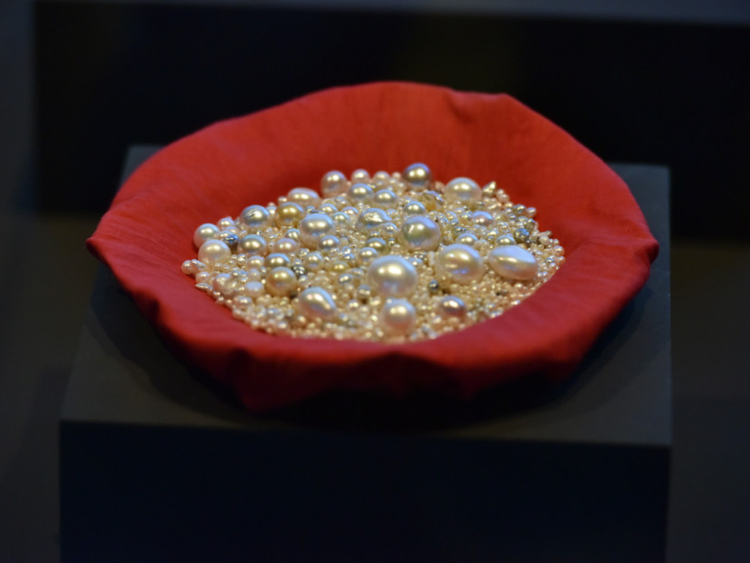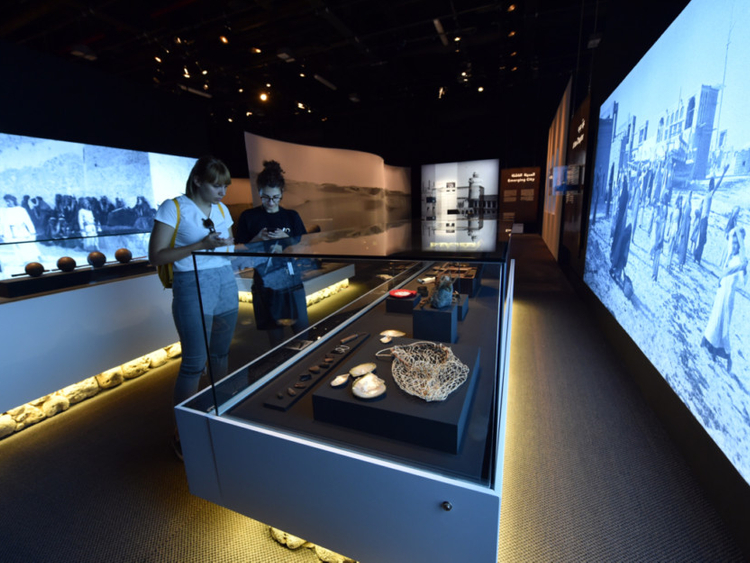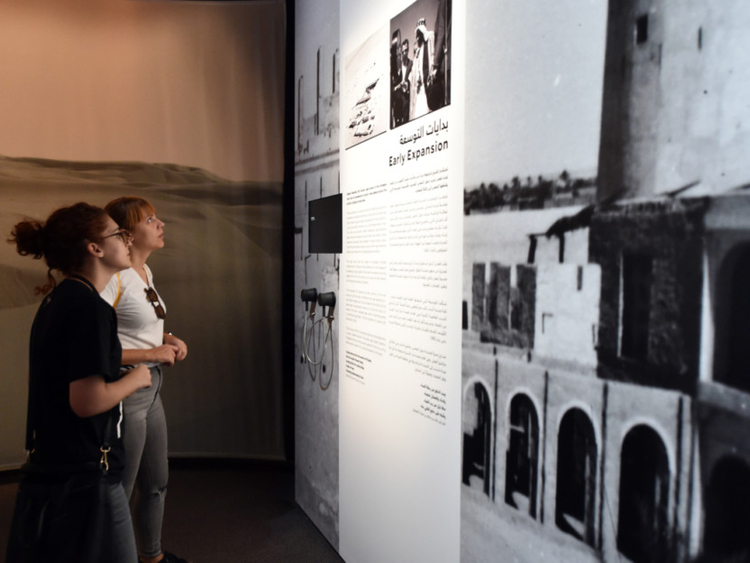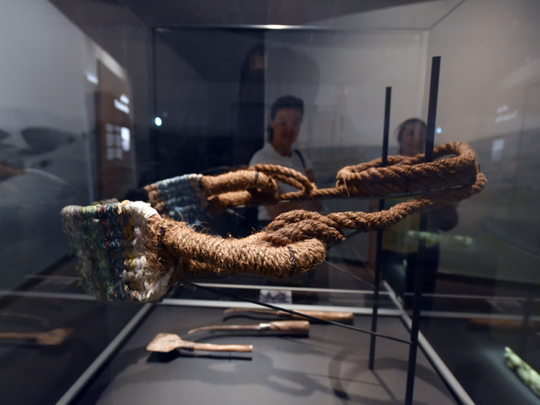
Abu Dhabi: The Qasr Al Hosn Exhibition, which opened its doors to the public on March 8, celebrates the Bedouin tradition of surviving in the desert.
Walking through the dimmed corridors of the exhibition, you sense the essence of Abu Dhabi’s history in every corner, showcased in Bedouin tradition — agricultural tools and weaponry, the habool harness (used in date harvests), manyur (wooden well pulleys), and the jena spear, rifles, swords, cannon balls and other ammunition.
A handwritten oil concession dating back to January 11, 1939, and signed by Shaikh Shakhbout Bin Sultan Al Nahyan for a British oil company, is also on display along with a radio, pocket watch and a beige bisht (cloak) belonging to him.
Gulf News asked visitors what struck them the most.
British expatriates Beverly Bradley, 53, a jewellery designer, and David Bradley 53, a senior engineering manager, were intrigued. “We’ve been living in Abu Dhabi for the past three years, and it’s splendid to see the other side to the story, away from the contemporary lifestyle. I thought I knew a lot about the city’s history, but, today I was amazed watching the holographic demo,” Beverly said.
“I also loved the traditional gold jewellery, especially the Victorian pearl necklace, and the story it tells about families’ wealth and social status,” she added.
David was impressed most with Abu Dhabi’s evolution over the past 100 years.
“The exhibition depicted the city’s evolution in the pre-60’s era; that is what struck me the most. It just made me realise how the city has transformed from simple fish and pearl trade to where it stands today,” he said.
Kyung Jong-moon, a 33-year-old architect, Yeon Tinhan, a 33-year-old housewife, and their one-year-old daughter Seonyu from South Korea were curious to learn more about the capital’s history.
“I’m impressed to learn about the city’s history and how it evolved across time. You walk around and get a chance to know the story behind Abu Dhabi,” Kyung said.
Tinhan added: “What struck me the most is how tribes survived in the desert, and how they extracted components of palm trees to make shelters, baskets, and storage compartments.”
Qasr Al Hosn premises also hosts various interactive activities such as the traditional Bedouin sadu weaving.
Sana Marawi, 27, an architect from Syria, said: “It’s a lot of fun when you weave on walls. You’re incorporating colourful threads into a piece of art.”
Philippa Goes, 31, a graphics designer from Portugal, took some sadu weaving classes to learn its techniques. “Emirati artisans taught us sadu weaving on the floor, but we took it a step further and decided to weave on the wall, it’s exhausting, but a lot of fun.”
Muge Ozcan, 27, graphic designer from Turkey said: “It was my first time to do sadu weaving, we started on Monday, and today we’re finally done. It’s lovely to see the colourful ropes and threads turn into triangles, diamonds and squares that depict culture.”
The exhibition also offers visitors a journey through the story behind Abu Dhabi via a rich collection of oral testimonies, historical photographs, and other materials that highlight the history of the region, and the vital role of Qasr Al Hosn within Abu Dhabi as a beacon of heritage, culture, and Emirati tradition.
Details
- What: Qasr Al Hosn Exhibition
- When: 9am to 8pm, throughout 2017
- Where: Qasr Al Hosn in Khalidiya


